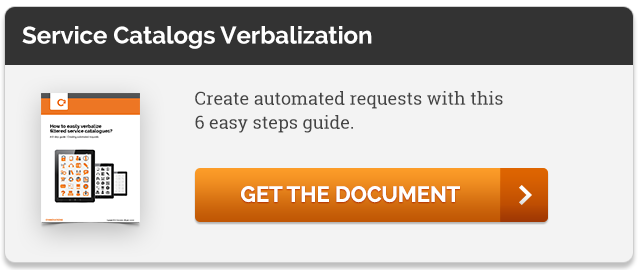IT Service Catalogs : Determining Your Audience
The Information Technology Infrastructure Library (ITIL®) recommends improvement of service catalogue content, as a basic priority of IT Service Management (ITSM) and Service Level Management (SLM). It focuses directly on supporting IT services needed for enterprise applications. Improved content is essential because the catalogue is the only part of an organization's service portfolio published to customers; thus, what it offers needs to be accurately portrayed. And, because the catalogue is used to support the sale and delivery of IT services, determining the audience for these messages is equally important.
Service Catalogue Priorities
The service catalogue is a structured document or database describing an organization's live services, including those available for deployment. Because it is the only component of a firm's overall service portfolio accessible to prospective customers, the well-designed service catalogue readily communicates to customers the availability of company IT-services and their performance expectations, according to ITIL standards. Included in the service catalogue is information about organizational :
- Contact points,
- Ordering,
- Deliverables,
- Prices, and
- Request processes
Services are characterized by :
Professional/expert IT resources enabling a business process that comply with customer needs, while aiding customer’s enterprise strategies, causing customer belief that the services provided represent a consistent product.
To this end, the service catalogue is an integral component of the customer relationship, informing corporate processes. It helps organize interactions with customers by defining available services to ensure appropriate identification of their respective audiences in particular, followed by prioritization of their delivery to those customers-users.
Service Catalogue Audiences
The different services provided by an organization may overlap user-audiences, but many are discrete, of importance primarily to specified recipients. Thus, IT-personnel need to determine the intended audience for each service, as well as the appropriate means of presenting the service to them, for their optimal understanding of what it is and how well it can serve their needs. Policy determination follows completion of these tasks. ITSM vendors need to provide assistance in developing these aspects of SLM for service catalogue management.
ITSM vendors also need to excels on providing audience-determination assistance. In general, audience depends upon service-use:
- End-user services catalogue – the foundation of user self-service. It displays a listing of operational services for an audience of organizational employees, management personnel, administrative workers and contractors. Among such applications are access requests, delivery expectations, desktop software available, facilities' requests, licensing data and pricing information. Aid for automated request fulfillment is also provided, as are opportunities for external service use.
- Technical services catalogue – helps create a standardized, easily-used listing of technical-request processes such as automation or compliance methodologies for business analysts, project or release managers, and support-groups external to IT. Among applications are job scheduling, risk assessment, and storage.
- Business services catalogue – lists IT-services according to business services enabled and the value they deliver to an audience of enterprise leaders such as analysts, division heads, personnel managers and service level administrators. These strategic planning services include entry/warehouse management, product service descriptions, and SLM definition/development.
Conclusion
Your service catalog should be business-oriented, to provide vehicle marketing while communicating IT services beneficial to both end-users and business decision-makers. To do this, it is essential you properly determine your target audience. Plus, integrating your service catalogue to an efficient ITSM software solution provides the operational agility needed for successful enterprise applications; automated processing of your requests generates unparalleled productivity for service catalogue usage, and for the particular audiences you seek.
ITIL® is a registered trade mark of AXELOS Limited







